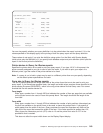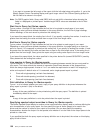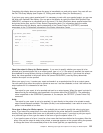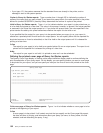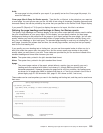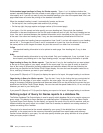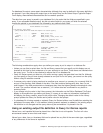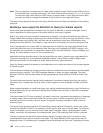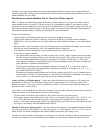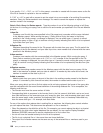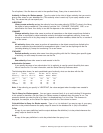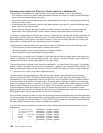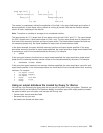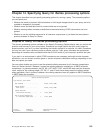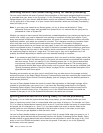definition is the only way to determine some of the assigned attributes, such as the allocated length for
variable length fields. Changing the format definition is the only way to specify certain attributes, such as a
preferred default for null values.
Specifying an output database file for Query for iSeries reports
File: To specify the database file that is to store your query output, you can type a file name, use the
name already shown, or press F4 (Prompt) to see a list of existing file names. If you intend to use an
existing file, you can select the one you want from the displayed list. If you intend to create a new file, the
file name you specify should not exist in the library where you want the new file stored. See Appendix A,
“Differences between Query for iSeries and Query/36” for more information.
Do one of the following:
v Type the name of the database file that is to contain the output of your query.
v Leave the file name that is shown. However, if the name is QQRYOUT, you might want to change it;
QQRYOUT is a file that others can use. They might use it and replace your data, or you might replace
theirs.
v With the cursor in the File prompt, press F4 (Prompt) to see, on the Select File display, a list of all the
files that you have the authority to use in the specified library or library list.
If you intend to use an existing file, you can select the one you want from the list.
If you want to create a new file:
– You should verify that the name you want to use is not in the list. (Note, however, that you see only
the files that you have the authority to use, and that even though a file by that name may not exist
now, it could be created before the time you actually run this query. At that time, if a file by that
name exists in the library you specified, you get an error message and you will have to change this
query definition or replace the existing file.)
– The file name must begin with an alphabetic character (A through Z, $, #, or @), and it can be
followed by no more than nine alphanumeric characters (A through Z, 0 through 9, $, #, @, ., or _);
for example, NAMEADDR or INVEN_12.
Because most system-supplied objects on the iSeries system begin with Q, your file names should
not start with a Q. Also, if you have systems in countries that use different languages, you might not
want to use $, #, or @ because they might not be translatable characters.
Library in Query for iSeries reports: Shows the name of the library that contains or will contain the
database file to be used. The initial library value shown in this prompt is: the value last used on this
display, the name of your current library (if specified), or QGPL if you have never used this display and
you do not have a current library.
If you want to use a different library than the one shown, you can type a different library name or press F4
(Prompt) to see a list of library names. Do one of the following:
v Type the name of the library that contains or will contain the file for the query output.
v If you type a generic library name (in the form of ABC*) or a special library name (*LIBL, *USRLIBL, *ALL,
or *ALLUSR), and then press F4 with the cursor in this prompt, the specified list of library names is
shown on the Select Library display. When you select the library you want from the list and press Enter,
you return to this display with the selected name filled in.
Member in Query for iSeries reports: Type the name of the member in the specified database file that
you want your output to be placed in. You can also specify *FILE (the default), *FIRST or *LAST; if one of
these is used, the value is changed to the actual member name when your query is run.
Or, with the cursor located in this prompt, you can press F4 to list the members in the file, and select one
from the list; however, if you are creating a new member, you should use a name not shown in the list.
Chapter 13. Selecting output type and output form in Query for iSeries reports 157



